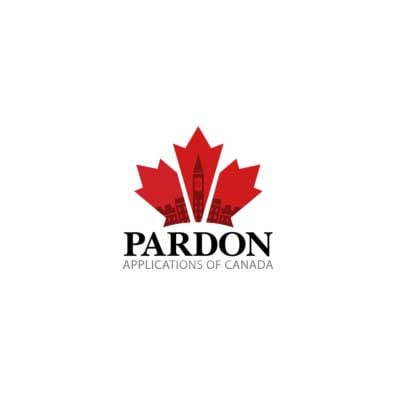
Konrad Bongard, freelance columnist for Pardon Applications of Canada, explores the geography of crime in Toronto and Canada, and makes a surprising suggestion for those looking to reduce the chances of the impact on crime.
Earlier this month, Toronto teacher Abshir Hassan was shot and killed in Lawrence Heights. What followed was public commemoration, and a familiar bout of bellyaching by the Toronto press and blogosphere about the perils of the inner city, supposedly caught in an in irreversible downward spiral of gangland violence.
Indeed, the Danzig St. and Eaton Centre shootings — which resulted in three deaths and dozens of injuries — are tragic and still fresh in the memories of many Torontonians. But residents of Canada’s largest city will be relieved (and perhaps surprised, given the sensationalism that passes for reporting in many of the country’s largest newsrooms) to learn that in StatsCan’s recently published 2013 CSI (Crime Severity Index), Toronto is one of the safest cities per capita in the country, with a CSI of 47.1.
This trend is not new: for the past decade, Toronto has consistently ranked as one of the safest cities in Canada, with surrounding centres such as London (67.2), Kitchener (56.8) and St. Catharines (57.5) regularly reporting a higher rate of crime severity. Toronto’s CSI is now thirty-six per cent lower than in 2003.
The three cities with the highest CSIs in 2013 in Canada were Regina (109.3), Saskatoon (99.1), and Kelowna (92.6).The three lowest were Barrie (42.8), Guelph (43.0), and Quebec City (46.5) — though Toronto had the fourth-lowest CSI in Canada, and its crime severity has decreased 36% since 2003.
Given the indubitable fact of Toronto’s low crime prevalence, it is worth posing the question: why does Toronto still seem to be plagued by the reputation within Canada as being ‘dangerous’ city?
It may be that — because Greater Toronto encompasses a population of five million people — there are invariably more crimes committed there, and more stories written about them. Continuous exposure to news of criminality in Toronto leads people to instinctively assume that, because they hear about crime in Toronto more than in other cities, it must be more violent — without taking into account its size.
“…for the past decade, Toronto has consistently ranked as one of the safest cities in Canada.” – Bongard, Pardon Applications of Canada
It may also be that because Canadians are exposed to so much American media, we’ve assimilated the idea that inner cities are, in principal, dangerous places to live. But this ignores crucial difference in the social landscape of Canada’s cities compared with the United States.
The infamous decline of Detroit, for instance, occurred in part because wealthy residents began to migrate to the suburbs en masse in the 1970s in order to avoid paying higher municipal taxes in the city. Unable to amalgamate the surrounding areas due to a provision in Michigan state law which forces all citizens of a municipality to vote in favour of amalgamation for it to occur, Detroit’s tax base proved insufficient to deal with the challenges associated with the industrial closures the city was faced with in the eighties and nineties. This same phenomenon has occurred in innumerable U.S. cities.
In Canada, by contrast, amalgamation never faced the same political hurdles. Toronto successfully amalgamated with many of the communities surrounding it in 1996. Montreal did it in 2002. And while Vancouver remains un-amalgamated, earlier this year the District of North Vancouver’s voted in favour of establishing a committee to investigate amalgamation.
There are other differences. In the United States, reported crime is disproportionately concentrated in areas with large African-American or — to a degree — Hispanic populations, owing to the social difficulties and ongoing discrimination faced by these communities (the incarceration rate for African-Americans is six times that of the general population, and Latinos are three times as likely to be sentenced federal offenders). These populations predominantly reside in large urban areas.
“It may also be that because Canadians are exposed to so much American media, we’ve assimilated the idea that inner cities are, in principal, dangerous places to live. But this ignores crucial difference in the social landscape of Canada’s cities compared with the United States.” — Bongard, Pardon Applications of Canada
In Canada, by contrast, many of the communities with high crime severity ratings include large numbers of indigenous persons, who have suffered consistently at the hands of discriminatory policies imposed by the federal government. As such, reported crime in Canada tends to be disproportionately concentrated in more isolated areas with large indigenous populations, or in mid-sized western cities such as Regina and Saskatoon.
This reality is partly demographic. Because indigenous Canadians have consistently had a higher birth rate than the general population, and because burgeoning resource industries in provinces such as Alberta and Saskatchewan have attracted many young (and typically male) Canadians from elsewhere in the country, the western provinces are also more young and more male.
In any case, maybe it’s time for Canadians to reverse the American mantra about retreating to the suburbs to escape high crime.
In Canada, if you want to avoid crime, move to the big cities.
Konrad Bongard is a freelance columnist for Pardon Applications of Canada, the nationwide processing firm for Canadian Pardon (Record Suspension) & U.S. Entry Waiver applications. The opinions expressed are that of the author and do not necessarily reflect those of Pardon Applications of Canada. For a list of statistical references used in this article, or more information on Pardon Applications of Canada, call 866-383-9744 or email [email protected].
PAC’s Ongoing Service Commitment
Email [email protected]
Schedule a Call https://www.pardonapplications.ca/schedule-a-call/
My Account Dashboard https://dashboard.pardonapplications.ca/


